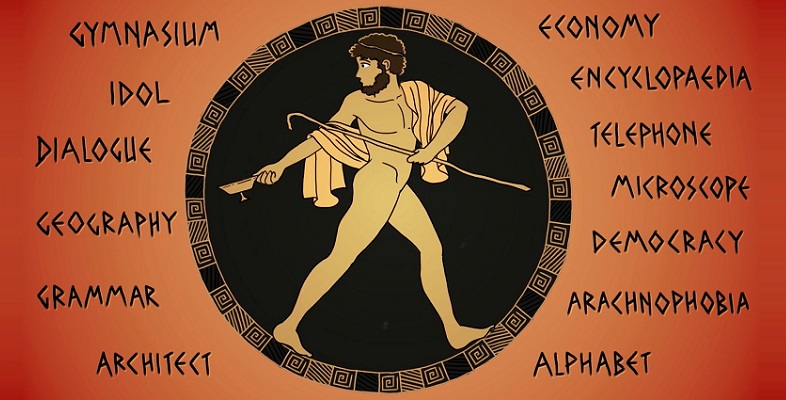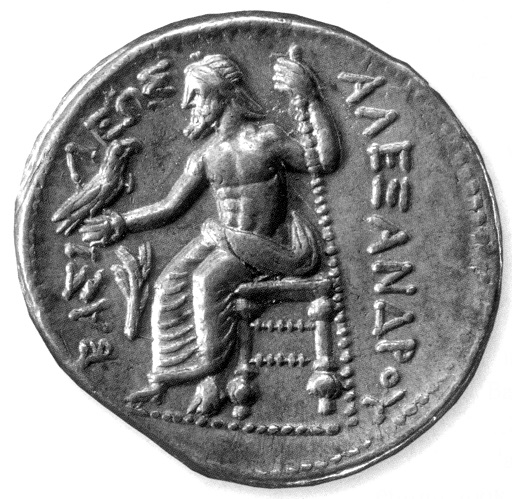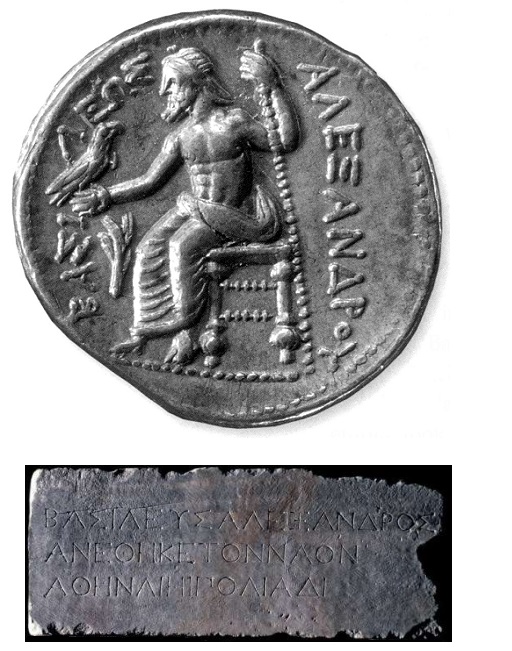6.1 Capital letters
Coins provide another excellent source of Greek writing. This example is roughly contemporary with the inscription from Priene, i.e. it comes from the latter part of the fourth century BCE.
Activity 6 Identify the king
Using your knowledge of Greek capital letters, can you identify the king represented on the coin? His name is on the right-hand side, his title on the left.
Discussion
The king is Alexander. The text reads:
ΒΑΣΙΛΕΩΣ ΑΛΕΞΑΝΔΡΟΥ
Or in lower case:
βασιλέως Ἀλεξάνδρου
The coin is one of many surviving examples of a silver ‘tetradrachm’ (four drachmas). The image is not of Alexander, but Zeus seated on a throne, with a sceptre in his left hand and an eagle on his right.
Compare the letters on the coin with those on the inscription from Priene. The words are similar, but one letter is different near the end of each word. What are the differences?
Discussion
On the coin, the penultimate letter of ΒΑΣΙΛΕΩΣ is an omega instead of an upsilon. And the final letter of Alexander’s name is an upsilon, which appears to have been turned slightly to fit the space available. Otherwise, the letters are the same and the style of writing is similar.
Coin: ΒΑΣΙΛΕΩΣ ΑΛΕΞΑΝΔΡΟΥ (βασιλέως Ἀλεξάνδρου)
Inscription: ΒΑΣΙΛΕΥΣ ΑΛΕΞΑΝΔΡΟΣ (βασιλεὺς Ἀλέξανδρος)
The different word ending on the coin indicates that it ‘belongs to’ or is ‘of’ ‘King Alexander’. This use of word endings is treated in greater depth in Session 5.


